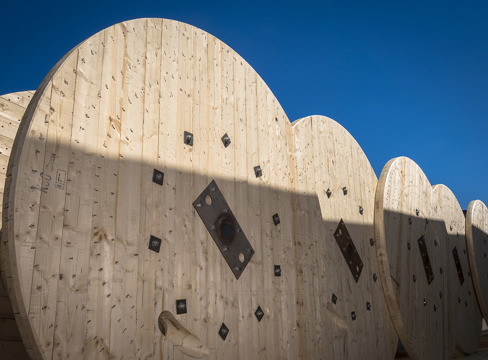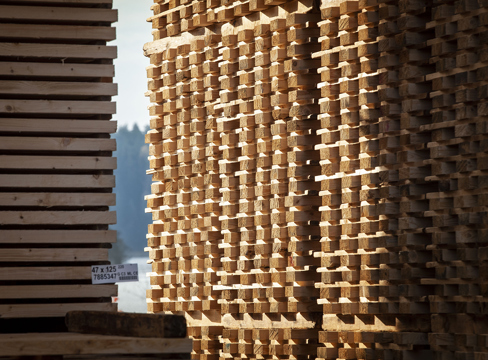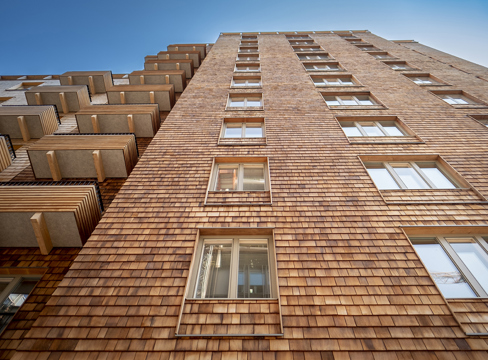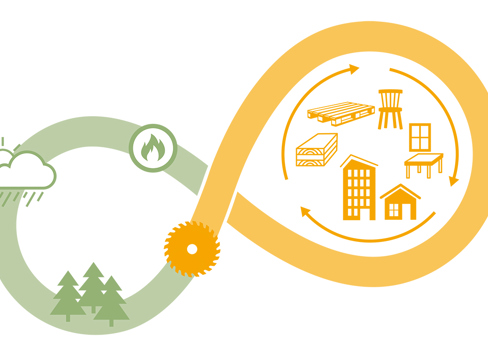Architecture and building in wood
The construction industry currently accounts for approx. 40 percent of all carbon emissions around the world. Over the next 40 years, global construction is expected to reach 230 million square metres – an area the size of Paris – every week. There is clearly a huge need to switch to a more climate-neutral and circular construction industry.
All the stakeholders in the industry therefore need to keep their sustainability ambitions high, along with the rest of society. These ambitions must feed into both architecture and construction – indeed the whole chain from design concept to material choices and the erection of the building; the whole chain from raw material, production and transport to finished building, use, end of life and recycling. All the decisions and material choices that are taken, from the very first design, affect emissions.
And sustainability also means taking account of local natural resources and energy, water and land use, not to mention being resource efficient and working with renewable materials and energy sources, preferably even before the first ground is broken. Then there are the conditions for recycling and the opportunities for reusing materials.
The most sustainable building is of course the one that is never built. But the next best outcome can be achieved through circular thinking, minimising resource consumption, seeing waste as a potential resource for the current project and others, using renewable materials and considering resource efficiency along the whole chain.
Wood’s contribution
Did you know that a wooden building can store carbon dioxide for over a hundred years and that if, by 2025, half of Sweden’s apartment blocks were built in wood instead of other materials, the climate impact of the construction phase would fall by around 40 percent each year? Coupled with greater wood construction in public and private property developments, this would amount to around 1 million tonnes less carbon dioxide per year.
Few materials are as well suited to both construction and circularity as wood is. There is in fact no “if” – wood construction is already playing a significant role in the transition to a circular economy*.
Exploit existing buildings and build upwards
- As a relatively light material, wood can be used to build on top of existing structural frames without the need for reinforcement.
- Wood is a flexible material. It is possible to make changes to wooden buildings at practically any stage, parts can be replaced and the structure can be renovated. This in turn places less of a burden on the Earth’s resources, compared with demolition and building from scratch.
Industrial wood construction, larger prefabricated structural elements
- Wood is highly adaptable and easy to work with. It is simple to assemble and dismantle – for example by working with prefabricated modules.
- The low weight of the wood raw material opens up opportunities for greater prefabrication and industrial production of components, which can then be assembled on the construction site.
- Opting for industrial production can drastically reduce the number of deliveries to the construction site.
- It also allows for better control over quality and the working environment during production.
- Prefabricated elements mean less disruption on site and in the surrounding area, compared with building everything on site from scratch.
- A faster and more efficient process.
Circular building
- With wood, it is possible to take down the beams and use them again in another project. This is not a new idea – here in Sweden, we have always moved buildings. It increases the scope to reuse existing resources.
- The strength and durability of wood means that smart wooden buildings can be seen as material banks, designed for reuse.
Regulations and standards – architecture and building
An overview of sustainability labels and certifications.
The Swedish act on climate declarations for new buildings
As of 1 January 2022, all buildings must come with a climate declaration. This sets out the climate impact of the entire construction phase, including raw material supply, transport, product manufacture and the actual construction work.
The purpose of this legislation is to reduce the climate impact generated when constructing buildings. The next step will be to set a maximum limit for each climate declaration. This will help to achieve the national goal of a climate-neutral Sweden by 2045.
Standards
There are a number of standards that can be used to assess a building’s environmental impact. This work is being conducted internationally, within the EU and in each separate country. In Sweden, the Swedish Standards Institute (SIS) is responsible for the standardisation work. The work is being carried out in consultation with businesses and organisations.
For newbuilds, data on a building’s environmental impact must be produced, so that the developer can compare different proposals against each other.
The basis for all standards on the environment is ISO 9001 and ISO 14001. Then come the standards for life cycle assessments. ISO 14040, ISO 14044 and ISO 14025 describe how to transfer the results from the life cycle assessment to an Environmental Product Declaration.
Sustainability labels & certifications
An overview of sustainability labels and certifications for buildings and building products.

Miljöbyggnad
Miljöbyggnad is a Swedish certification system based on Swedish regulations and Swedish building practices. Miljöbyggnad assesses whole buildings and measures 16 different values in the areas of energy, indoor environment and materials. An audit is conducted by an independent third party before certification is approved. A follow-up inspection is conducted within three years.
SundaHus
SundaHus operates in the construction and real estate sector, helping companies and organisations to create toxin-free built environments of lasting value through simple and effective solutions for conscious material choices.
Byggvarubedömningen
Byggvarubedömningen is a non-profit economic association that assesses and provides sustainability information on building products. The assessments are based on criteria relating to chemical content, life cycle and social responsibility in the supply chain. The web-based tool makes it easier to choose sustainable materials for construction and maintenance.
Basta
Basta works to phase out the use of particularly harmful chemical substances and provides a database of building products that meet the organisation’s requirements. The information in the system is quality assured through regular audits of the suppliers. Basta is a non-profit company owned by IVL Swedish Environmental Research Institutes and the construction industry body Byggföretagen.
Green Building
A European system aimed at property owners and managers that want to make energy use in their premises and homes more efficient. The requirement is that the building uses 25 percent less energy than previously, or compared with Sweden’s newbuild requirements in Boverket’s Building Regulations (BBR).
LEED
Leadership in Energy and Environmental Design is an environmental certification system from the USA that is more comprehensive than the systems mentioned above. For example, LEED takes greater account of the production phase for the materials used in a building.
BREEAM
The BRE Environmental Assessment Method comes from the UK and has more or less the same scope as LEED. BREEAM takes account of the production phase to some extent and also considers the environmental impact of the construction materials’ production from a life cycle perspective.
WELL Building Standard
WELL Building Standard – WELL is a global tool for improving health and well-being in buildings. The certification is based on an assessment of multiple factors: air, water, diet, light, movement/ergonomics, comfort, acoustics, materials/chemicals, senses/well-being and community.
* Read more about industrial building in wood – the current status and a forecast for 2025 at:






